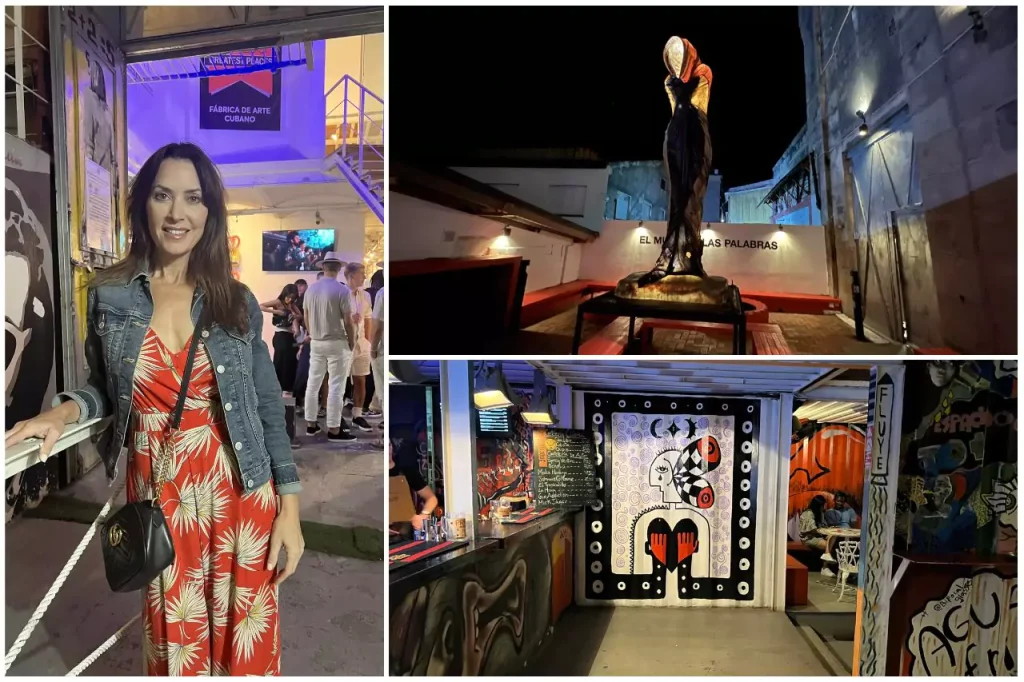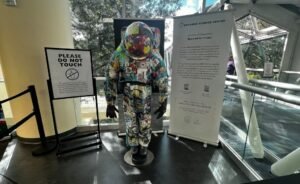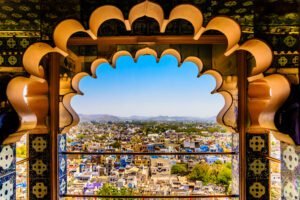This post may contain affiliate links, which means I may earn a small commission from purchased products at no additional cost to you. See my full disclosure here.
When you think of Cuba, you probably imagine rum, cigars, vintage cars, and the steady rhythm of rumba. But during my recent trip, I discovered a different side of the island — one that’s vibrant with creativity, innovation, and artistic expression. A new generation of Cuban entrepreneurs, artists, and designers is reshaping how the world experiences this beautiful country.
Through fashion, fine art, and community-driven creativity, Cuba’s emerging creative class offers a fresh and inspiring lens to experience the island. Here’s a closer look at my journey exploring this exciting movement.
Table of Contents
Why Cuba’s Creative Scene Matters Now
As a traveler, I wanted to go beyond the usual tourist spots. I wanted to understand the real Cuba today. What I found was a country where a cultural shift is underway.
Amid economic hardships and changing times, art, fashion, and entrepreneurship are becoming powerful forms of expression. Meeting the artists and designers behind this movement showed me just how much creativity is fueling hope and new opportunities across the island.
The Rise of Cuba’s Fashion Scene: Meeting Alexandra Kopachkov Fumero
One of the highlights of my trip was visiting Casa Fumero, a boutique showroom in Havana founded by fashion designer Alexandra Kopachkov Fumero.
Alexandra carries on the legacy of her mother, Jacqueline Fumero, a celebrated Cuban fashion pioneer who passed away in 2022.

“There are few Cuban designers known outside of Cuba, so I want to expand the brand beyond the island and continue her legacy,” Alexandra told me warmly.
Walking through the cozy showroom, I admired the exquisitely made-to-order dresses featuring flowing silks, hand embroidery, and intricate embellishments. One dress caught my attention immediately — a black sequined gown with delicate see-through cutouts.

“The cutouts are inspired by Cuba’s black coral,” Alexandra explained. “The idea is to reveal the legs underneath in an elegant, subtle way.”

Hearing her speak about her mother’s work, the brand’s dragonfly emblem (symbolizing transformation), and her dreams for the future made this visit one of the most meaningful parts of my trip.

The Role of Women in Cuba’s Creative Movement
It struck me how female creativity is driving much of Cuba’s new identity.

At Dador in Old Havana, founded by Lauren Fajardo, Ilse Antón, and Raquel Janero, I saw another powerful example. Dianna Alejo, Dador’s Sales Manager, explained:

“Dador means ‘the giver’ in Spanish. We want to give a different view of Cuban fashion — one that is sustainable, stylish, and made with pride here in Cuba.”

The boutique felt refreshingly modern with breezy dresses like the Malecón dress, stitched with pleats inspired by traditional Cuban shirts. Dador’s collections are all crafted with natural, sustainable fabrics like cotton and linen, and sold both locally and internationally through their online store and Facebook page.

These women aren’t just creating beautiful clothes, they’re changing perceptions of what Cuban craftsmanship can be.
Experiencing Cuba’s Contemporary Art Scene at Fábrica de Arte Cubano
Another unforgettable experience was visiting Fábrica de Arte Cubano in Vedado, Havana.

Housed in a repurposed oil factory, Fábrica is a sprawling maze where live music, edgy art exhibitions, dance performances, and theater shows all happen under one roof.
“It’s not a museum or nightclub — it’s an open gallery where all arts come together,” a guide proudly told me during my visit.

That Friday night, I watched a powerful modern dance performance while exploring exhibits like Enrique Rottenberg’s installation.

There were hundreds of preserved pieces of used underwear, a raw commentary on vulnerability.

The atmosphere was electric, creative, and unforgettable — a testament to how Cuba’s art world is pushing boundaries.
Preserving Tradition at Taller Experimental de Gráfica
In the heart of Old Havana, I spent time at Taller Experimental de Gráfica, Cuba’s historic printmaking workshop.

Inside, I watched artists sketch designs and press them into colorful lithographs using giant limestone slabs — preserving techniques that once helped shape Cuba’s revolutionary posters and cigar labels.
The smell of ink, the sound of presses, and the pride in preserving this traditional craft made this visit feel like stepping into a living piece of Cuban history.
Meeting Cuban Artist Roidley Navarro in Trinidad
In the colorful town of Trinidad, I had the chance to visit Roidley Navarro, a Cuban artist whose work truly shook me.

Roidley creates multi-dimensional paintings that often embed real objects — a surreal, textured storytelling method that captures the struggles and dreams of Cuban life.
One painting, a haunting self-portrait where his chest rips open to reveal the Cuban flag, stood out.

“I’m using a self-portrait to express Cuban freedom,” Roidley explained. “It’s my way of showing the hidden pain and strength of Cubans today.”

Despite challenges — including selling mainly to tourists since locals can’t afford original art — Roidley remains hopeful, dreaming of one day exhibiting at Art Basel.
You can view more of his striking pieces on his Instagram and Facebook.
Exploring the Afro-Cuban Spirit at Callejón de Hamel

Another unforgettable stop on my journey through Havana’s creative scene was Callejón de Hamel, a vibrant alleyway tucked into Centro Habana.

The narrow street bursts with colorful Afro-Cuban murals, sculptures made from salvaged materials, and the beat of live rumba music. On Sundays, the alley transforms into an open-air cultural celebration, where dancers, musicians, and artists gather to celebrate Cuba’s African roots.

Walking through Callejón de Hamel felt electric — a living, breathing canvas that honors Cuba’s Afro-Caribbean identity and spiritual traditions. It was a reminder that creativity here is not confined to galleries — it lives proudly in the streets.
How to Plan a Trip to Experience Cuba’s Creative Class
For this journey, I traveled with AC Journeys, a licensed tour provider specializing in cultural immersion trips. They curated a U.S. government-permissible itinerary that allowed me to experience Cuba’s creative movement authentically and respectfully.
Traveling with a knowledgeable guide made a significant difference. They arranged private transportation, including backup fuel tanks — a necessity given Cuba’s limited gas stations and fuel supply.
Because U.S. credit and debit cards are not accepted in Cuba, I carried cash in U.S. dollars, which I exchanged locally. Internet access was limited throughout the island, so I planned my communication in advance.
Experiencing Cuba’s creative class firsthand, visiting artists’ studios, fashion boutiques, and cultural centers, was possible because of careful planning and working with local experts who understood the landscape.
Final Thoughts
Exploring Cuba’s creative class gave me a deeper, more personal connection to the island.
Through art, fashion, music, and conversations with artists like Alexandra, Dianna, and Roidley, I experienced a Cuba full of energy, resilience, and hope — a Cuba that’s creating its own future.
If you want to truly understand the island beyond its beaches and classic cars, follow the art. That’s where the real stories are being written.
Stay Connected Anywhere with Saily eSIM
Traveling soon? Skip the hassle of buying local SIM cards and enjoy instant connectivity with Saily eSIM.
With Saily, you can:
- Activate mobile data in minutes—no physical SIM needed.
- Choose affordable plans in over 150 countries.
- Keep your WhatsApp, contacts, and number without switching.

Whether you’re exploring cities or remote getaways, Saily makes staying online easy and affordable.
Get your Saily eSIM now and travel worry-free.
FAQ’s About Cuba’s Emerging Creative Class
What is Cuba’s emerging creative class?
Cuba’s emerging creative class includes artists, designers, musicians, and digital entrepreneurs who are reshaping the country’s cultural landscape and offering new experiences for travelers.
How can travelers engage with Cuba’s creative scene?
Travelers can participate in art workshops, attend live music events, visit local galleries, and explore neighborhoods known for their vibrant street art and cultural activities.
Are there specific areas in Cuba known for creative tourism?
Yes, Havana is a hub for creative tourism, with areas like Fábrica de Arte Cubano and Callejón de Hamel offering rich cultural experiences. Other cities like Trinidad and Santiago de Cuba also have thriving artistic communities.
What should travelers know before visiting Cuba?
Travelers should be aware of visa requirements, currency exchange practices, and limited internet access. It’s advisable to plan accommodations and activities in advance and to carry necessary items like cash and essential supplies.
Watch the Full Episode Exploring Cuba:
Explore More Travel Tips & Guide to Cuba
Top Things to Do in Trinidad Cuba: History, Culture & Nature
Explore Havana in a Vintage Cuban Car – A Must for Travelers
Cuba’s Emerging Foodie Scene at La Guarida
Exploring Hemingway’s Cuba: An Essential Guide for Travelers


































